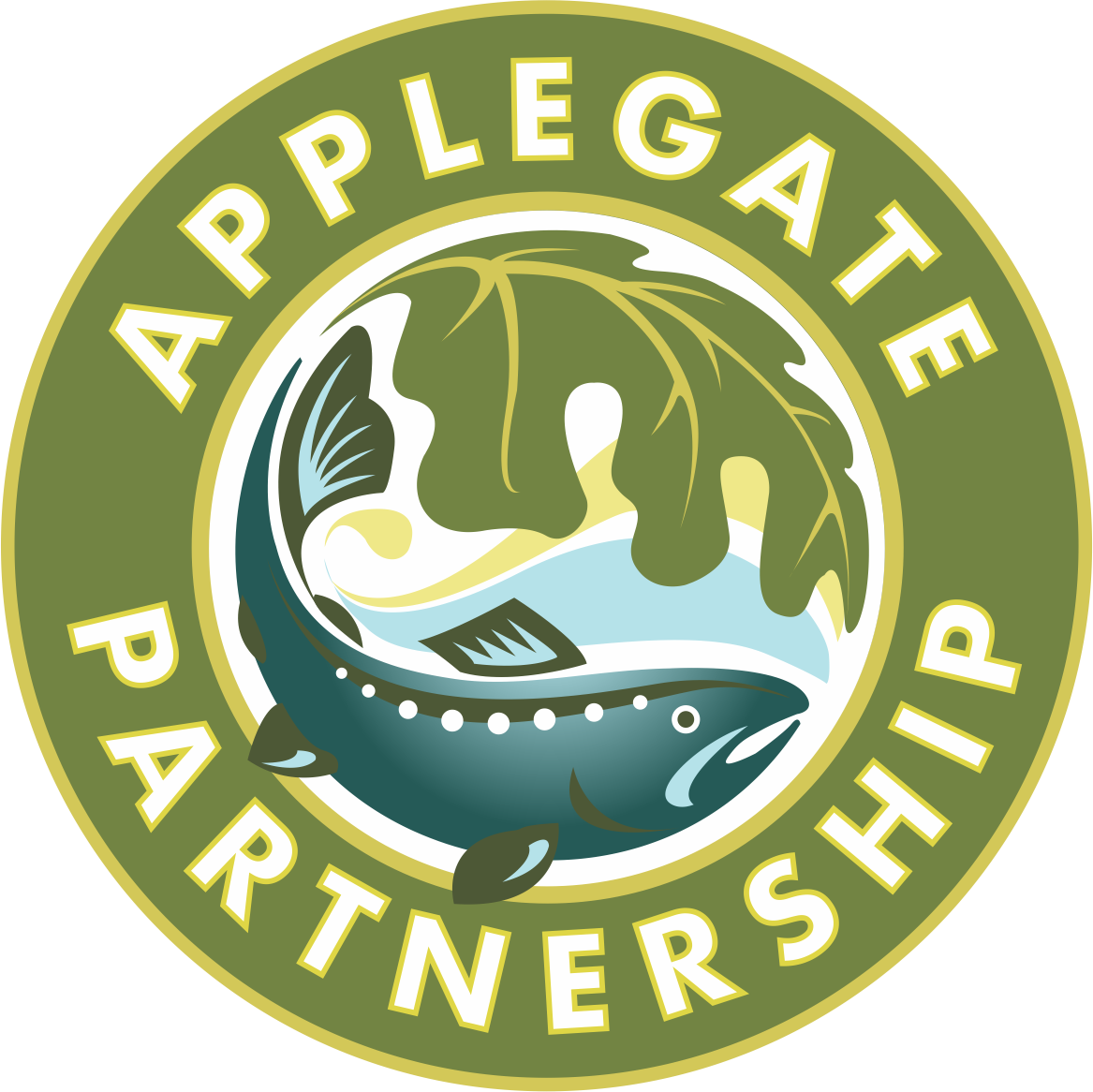Wildfire Risk in the Applegate: Wildfire as a Tool
This article was published in the Fall 2025 Edition of the Applegater.
View the original article here.
By Nathan Gehres
On my hikes through wilds of the Applegate, I often try to envision what the landscape used to look like hundreds of years ago, and how it may appear a century from now. Our local forests are currently in a state of flux, as the Douglas Fir die-off continues across the valley and now Ponderosa Pines and Madrones appear to be beginning to fade as well. There are quite a few factors that undoubtedly contribute to this tree mortality, but the primary culprit is the exclusion of wildfire, which shaped and managed the woodlands of SW Oregon for millennia.
According to historical accounts, burn scars in tree rings, and pond/lake sediment analysis, wildfire exclusion started in SW Oregon well over a century ago. On average, the historic fire return interval, the length of time between fires at a specific location, was eight years in the Applegate area, but this interval has been altered dramatically. As an example, my property on Humbug Creek hasn’t burned since the early 1920’s, representing over twelve missed fires that would have revitalized the forest, had the natural cycle been maintained. The removal of regular, low to mid-severity wildfires set the stage for the altered state that our forests are in now. Seedlings, especially those of Douglas Firs, and shrubs proliferated in the absence of fire. This crowded carpet of young shoots grew into overly dense thickets of suppressed trees that intensified competition within established stands and greatly increased the amount of fuel present for the occasionally occurring wildfires. The fuel loading supercharged fire activity on the ground, provided ladder fuel that can allow flames to reach the forest canopy, and filled in the spaces around open-grown mature conifers, making them more susceptible to burning. Tree and shrub propagation that is unchecked by wildfire results in intensified competition over diminishing resources (sunlight, nutrients, and water) which in turn reduces the health of the trees, making them more vulnerable to disease and drought. Additionally, this unchecked expansion of densely packed, small diameter trees and shrubs has engulfed meadows and other natural openings that are home to the highest species diversity of any of our local habitats. Without regular, moderate to low intensity fires, local forests have become unnaturally dense. This absence has resulted in decreased habitat quality, escalated competition over limited resources, and an increased risk of uncharacteristically severe wildfires.
Wildfire formation and behavior can be encapsulated in three factors, also known as the fire triangle. The three factors that determine whether a fire will start are: Oxygen, an ignition source, and fuel. The three factors that determine wildfire behavior are: weather, topography, and fuel. We can’t remove the oxygen or prevent all ignitions, nor can we change the weather or alter the topography, but we can do something about the fuels on our landscape.
As I stated in my Spring 2025 article, there are several agencies, organizations, and individual landowners who are working diligently to mechanically treat fuels and reduce the risk of a wildfire throughout the Applegate. There will likely never be enough resources to treat all of our landscape, but if strategic prioritization is utilized, treatments can be targeted where they will be the most effective. As the Applegate is a “checkerboard” of different ownership, robust partnerships are required to achieve an “all-lands” approach across both private and public land. This initial work is expensive, but if done properly, the benefits can be maintained through periodic prescribed fires, with the assistance of state and federal agencies and groups such as the Rogue Valley Prescribed Burn Association.
As the forest conditions change around us our idea of what a healthy forest looks like needs to change too. We find ourselves in a novel situation and relying on the forest practices that got us into this conundrum won’t solve our problems. Basically, we can’t utilize timber harvest to solve the problem as standing dead trees and brush have little to no market value. Preparing the landscape for the reintroduction of prescribed fire is the only economically and ecologically viable method to improve the health of our forests and reduce the risk of an uncharacteristically severe wildfire from harming our communities and our environment.
Questions? Please contact:
Nathan Gehres
APWC Habitat Restoration Project Manager
nathan@apwc.info
(541) 890-9989
